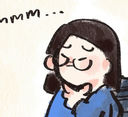The toolbox when facing cognitive diffusion
" As we become more verbal, our cognition becomes the reality. In other words, we are trapped because we fuse with the content of our cognition."
— pg.11, Acceptance and Commitment Therapy and the Third Wave of Behavior Therapy, Hayes et al.
Human brain, blessed with a better developed frontal cortex, allowed complicated thinking. This is a blessing and yet a curse. Borrowing concept from machine learning, human brain could lead to "overfitting": new forms of behaviour could be established through very indirect means.
Additionally, as human language are dependent on relational frames, it allows pain to occur in almost any situation through derived relations. And the challenge is that, verbal relations/derived stimulus relations are extremely difficult to break up.
Whereas cognitive behavioural therapy tries to use logic reasoning to break the stimulus relations, acceptance and commitment therapy encourage people to carry the thoughts while marching towards one's value oriented path.
One could apply cognitive behavioural therapy if facing extreme intrusive thoughts (i.e. suicidal or OCD) and apply acceptance and commitment therapy when facing day-to-day intrusive thoughts (i.e. thoughts on feeling bad).
The tool box:
Cognitive Behavioural Therapy
1. Automatic Thoughts:
Quick, habitual, judmental, emotionally charged, taken as truth without reflection.
Example: Whenever being rejected, the person automatically thinks "I'm a failure"
Tool: Ask yourself
- what happened?
- what are your thoughts and emotions?
- what are some examples that shows the opposite?
- what are some alternative thoughts?
2. Intermediate Beliefs:
Rules, hypothesis, attitude. Typically involves "if...then..."
Example: "if I get rejected, then I am useless"
Tool: Ask yourslef (socratic questioning)
- is this rule always correct?
- what are some counter examples?
- how will this help me?
- how will this harm me?
3. Core beliefs:
Sense of self, usually derived from early experience
Example: I am not worthy of love. Others can't be trusted. The world is dangerous.
Tool: behavioural experiments
—— get out there and try again and again until you found otherwise!
Example: Someone with the belief “I’m boring” might be encouraged to join a group and note how people respond to them.
Over time, real experiences help disconfirm rigid beliefs.
Summary Table:
| Component | Example | CBT Strategy |
|---|---|---|
| Automatic Thought | “She didn’t reply, I messed up” | Thought record, evaluate logic |
| Intermediate Belief | “If I make mistakes, people leave me” | Identify and reframe assumptions |
| Core Belief | “I’m not good enough” | Uncover → challenge → test → replace |
Acceptance and Commitment Therapy
When having automatic thoughts like "I'm a failure", try:
1. cognitive defusion: I am not my thought
- "I notice that I am having the thought that..."
- repeat the thought you have until it loses meaning
2. self-as-context: I am not the story I tell myself. I am the awareness behind all of it.
- "I am flexible, I am the part that sees, hears, and chooses"
3. committed action: I choose to act from values, not fear.
- "I move forward anyway."
- "I want to live with love."
ACT focuses on noticing and accepting. It does not fight against automatic thoughts, therefore it requires much less energy and avoid being stuck in thoughts.
